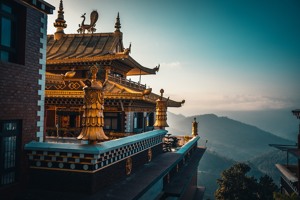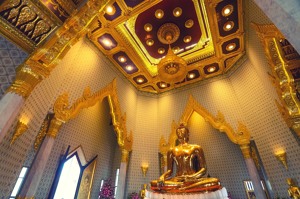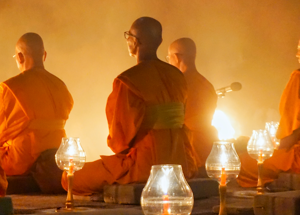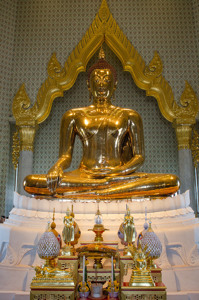Tavex uses cookies to ensure website functionality and improve your user experience. Collecting data from cookies helps us provide the best experience for you, keeps your account secure and allows us to personalise advert content. You can find out more in our cookie policy.
Please select what cookies you allow us to use
Cookies are small files of letters and digits downloaded and saved on your computer or another device (for instance, a mobile phone, a tablet) and saved in your browser while you visit a website. They can be used to track the pages you visit on the website, save the information you enter or remember your preferences such as language settings as long as you’re browsing the website.
| Cookie name | Cookie description | Cookie duration |
|---|---|---|
| tavex_cookie_consent | Stores cookie consent options selected | 60 weeks |
| tavex_customer | Tavex customer ID | 30 days |
| wp-wpml_current_language | Stores selected language | 1 day |
| AWSALB | AWS ALB sticky session cookie | 6 days |
| AWSALBCORS | AWS ALB sticky session cookie | 6 days |
| NO_CACHE | Used to disable page caching | 1 day |
| PHPSESSID | Identifier for PHP session | Session |
| latest_news | Helps to keep notifications relevant by storing the latest news shown | 29 days |
| latest_news_flash | Helps to keep notifications relevant by storing the latest news shown | 29 days |
| tavex_recently_viewed_products | List of recently viewed products | 1 day |
| tavex_compare_amount | Number of items in product comparison view | 1 day |
| Cookie name | Cookie description | Cookie duration |
|---|---|---|
| chart-widget-tab-*-*-* | Remembers last chart options (i.e currency, time period, etc) | 29 days |
| archive_layout | Stores selected product layout on category pages | 1 day |
| Cookie name | Cookie description | Cookie duration |
|---|---|---|
| cartstack.com-* | Used for tracking abandoned shopping carts | 1 year |
| _omappvp | Used by OptinMonster for determining new vs. returning visitors. Expires in 11 years | 11 years |
| _omappvs | Used by OptinMonster for determining when a new visitor becomes a returning visitor | Session |
| om* | Used by OptinMonster to track interactions with campaigns | Persistent |
| Cookie name | Cookie description | Cookie duration |
|---|---|---|
| _ga | Used to distinguish users | 2 years |
| _gid | Used to distinguish users | 24 hours |
| _ga_* | Used to persist session state | 2 years |
| _gac_* | Contains campaign related information | 90 days |
| _gat_gtag_* | Used to throttle request rate | 1 minute |
| _fbc | Facebook advertisement cookie | 2 years |
| _fbp | Facebook cookie for distinguishing unique users | 2 years |
Once Hidden, Now Revealed: The Tale of the World's Grandest Golden Discovery

In the heart of Thailand lies a tale as golden as time itself. A story of a seemingly ordinary clay statue that concealed an invaluable secret for centuries. As the Thai monks of the 1950s embarked on a mission to relocate their sacred temple, they were unaware that they would uncover a discovery of unparalleled grandeur. This is the story of the world’s largest golden object, an artefact that weaves history, culture, and spirituality into its shimmering frame.
In the 1950s, in the serene landscapes of Thailand, a group of devoted Thai monks faced the significant task of relocating their temple. Among their cherished possessions was a large Buddha statue, believed to be made of clay. As they began the intricate process of moving this revered statue, the monks encountered unexpected challenges. However, these challenges were about to unveil a profound secret associated with the statue, a secret that had remained concealed for generations.
The process of transporting the large Buddha statue was fraught with challenges, heightened by its unexpected weight. The monks, under the impression that the statue was made of clay, were unprepared for its true heft. Their initial attempts to lift it from its pedestal were met with failure as the ropes, unable to bear the weight, snapped, causing the statue to fall with a resonating thud.
Upon closer inspection, one monk identified a peculiar crack on the statue’s surface. This crack emitted an intriguing, radiant light. This discovery spurred the monks to further examine the statue. Using a hammer and chisel, they unveiled something a lot more dense than clay.
The sight emerging from the clay was stunning. This statue was not made of clay. It was all gold. There was also a key at the lower end of the statue that could be used to split it into nine different pieces. This was intended to simplify the transport of the figure.

Historians believe that the giant Buddha statue was covered with clay several hundred years ago. At that time, its purpose was to protect the statue because the country was being attacked by the Burmese army. They wanted to keep the great value of the Buddha statue a secret.
Burmese soldiers who arrived at the temple in 1767 probably killed all the monks in the temple. Several centuries passed, and only in the 1950s was it discovered how much wealth was hidden inside this statue.
It is the world’s largest object made of gold. It weighs a total of 5.5 tonnes and is located in the Wat Traimit temple in Thailand. Its height is a little more than 3 metres. The gold contained in it is currently worth 282 million pounds, but its cultural value is priceless for many.
The story is used in traditional stories
Buddhists have also started to use what happened to the golden Buddha image as a metaphor in their teachings. Buddhist and author Tara Brach has used the story of the Buddha statue as follows:
Just as the monks hid the shining nature of the golden Buddha during difficult times, so we cover up our inner purity and goodness when we have to deal with the difficulties of the world. As we grow up, we start to follow society’s values and judgements, losing touch with our virtue, creativity, and tenderness. We cover up gold because we want the approval of others to give us value.
By adding more and more layers to our pure nature, we begin to identify with these layers—we think we are separate from others, threatened, and inadequate. And even if we cannot see our golden nature, it cannot be dimmed or erased. It calls us daily through longing for connection, curiosity, beauty, and helping others. Our deeper intuition guides us to something beyond our habitual and detached selves: something spacious, mystical, and sacred.
The Meaning and History Behind the Golden Buddha
The Buddha statue, seated in a cross-legged position, has physical features that symbolise its spiritual essence. The flame on its head represents radiance, while its elongated ears signify royalty. In Buddhist beliefs, the colour gold embodies knowledge, enlightenment, purity, joy, and freedom.

The statue’s unique history leads many to view it as divinely influenced. It’s remarkable how the Sukhothai Dynasty safeguarded it from Burmese invaders, known for melting gold artifacts. Temple residents often interpret the Golden Buddha’s story as a metaphor. They believe that everyone inherently possesses a golden nature or innate wisdom.
Over time, societal norms and expectations cover this pure essence, much like mud over gold. The story serves as a reminder to break free from these layers and rediscover our inner brilliance.
Gold plays an important role in Buddhism
When studying the egg-shaped head of the Buddha, it was revealed that there were Indian influences in its design. From this, it was concluded that it was probably made in the 13th–14th centuries, during the reign of the Sukhothai dynasty.
Foreigners visiting the statue often expect to be blown away by its glory. Instead, it is often a simple experience centred around peace.
Gold has played an important role in Buddhist mysticism throughout history. Gold symbolises the sun or fire. It is believed that gold should not be mixed with other elements because it loses its lustre in this case. Most of the statues in Tibet are covered with pure gold. In addition to the Wai Traimit temple statue, several other statues have been made that are entirely made of gold.

The golden Buddha of Wai Traimit is seated in a traditional pose known as the Bhumisparsha Mudra. Bhumisparsha means touching the earth, and mudra means a ritual pose. Some mudras involve the whole body, but in most cases, they are expressed with the hands or fingers.
The Buddha’s position symbolises when he sat under the bodhi tree, or “tree of bliss”. The Bodhi tree is the sacred fig tree under which the Buddha attained enlightenment in 500 BC. Buddhism also emerged at the same time.
The golden Buddha of Wat Traimit stands not just as a testament to the incredible craftsmanship and artistry of a bygone era but also as a symbol of the indomitable spirit and resilience of a culture. It signifies the hidden treasures that often lie beneath the surface, waiting for the right moment to be unveiled. This discovery has not only added a golden chapter to the annals of history but has also illuminated the teachings of Buddhism, emphasising the significance of inner purity, the imperishable nature of our true selves, and the timeless value of cultural heritage. As we reflect on this tale, we’re reminded that sometimes the most extraordinary stories are hidden in the most ordinary of places.


















